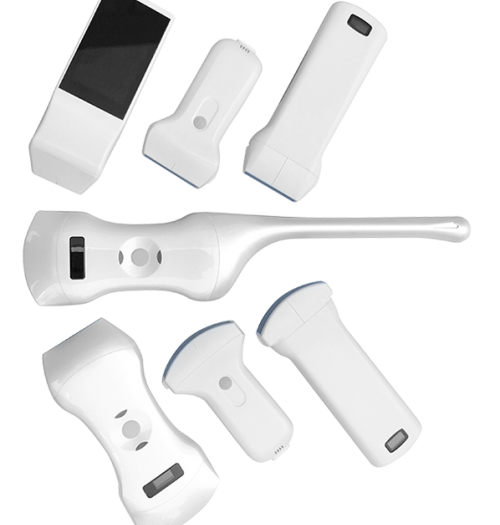Wireless Portable Ultrasound is Very Essential physician Tools for Emergency Situation
Wireless portable ultrasound has indeed become an essential tool for physicians in emergency situations, offering quick, accurate, and non-invasive diagnostic capabilities. Its significance is clear across multiple emergency scenarios:
Key Reasons Wireless Portable Ultrasound is Essential in Emergencies
- Rapid Diagnosis at the Point of Care: Wireless ultrasound allows physicians to quickly assess critical conditions like internal bleeding, cardiac arrest, pneumothorax (collapsed lung), and abdominal injuries directly at the bedside, in ambulances, or even in remote settings.
- Mobility and Convenience: Wireless devices are compact and easy to carry, allowing physicians to perform diagnostics wherever the patient is located. This mobility is crucial for emergency responders in ambulances, paramedics on-site, or military medics in field hospitals.
- No Need for External Power or Cables: Wireless devices typically operate on rechargeable batteries and don’t rely on wall outlets or cumbersome cables, providing flexibility in fast-paced, chaotic environments.
- Real-Time Imaging for Life-Saving Interventions: Wireless ultrasound offers live imaging for interventions like central line placement, needle thoracostomy for collapsed lungs, and guiding resuscitation efforts in cardiac arrest. This accuracy can significantly improve patient outcomes in time-sensitive scenarios.
- Better Patient Outcomes Through Immediate Decision-Making: Physicians can make quick decisions on patient stabilization, surgical need, or transfer based on ultrasound findings. The device also helps to differentiate between similar symptoms (e.g., chest pain due to heart vs. lung issues), directing treatment more accurately.
- Data Sharing and Remote Collaboration: Wireless ultrasound devices often connect to mobile devices or hospital networks, allowing images and findings to be shared instantly with specialists, even if they’re off-site. This capability improves diagnostic accuracy and supports collaborative decision-making, which is vital in complex emergencies.
Common Emergency Applications for Wireless Portable Ultrasound
- Trauma Assessment (FAST exam): Evaluating abdominal and chest trauma for internal bleeding.
- Cardiac Emergencies: Assessing heart function and detecting pericardial effusion (fluid around the heart).
- Lung Evaluation: Detecting pneumothorax or pleural effusion (fluid in the lungs).
- Abdominal Pain: Quick assessment for appendicitis, gallstones, or ectopic pregnancy.
- Vascular Access: Assisting with intravenous and central line placements.

